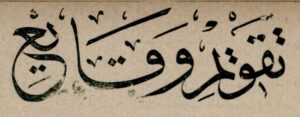Takvim-i Vekayi
The Calendar of the Ottoman and Turkish Studies Virtual Events Communication Platform
If you are interested in submitting your events to be posted on this platform’s calendar, the Takvim-i Vekayi, please fill out this form and e-mail it to osta.webmaster@gmail.com and otsa.webeditor@gmail.com copying secretariattsa@gmail.com at least ten days before your event. The form will be processed within a week of receipt. We are grateful to our volunteer webmaster, Gharam Alsaedi, a UC Davis Computer Science senior, and our volunteer web editor Molly Powers, a UC Davis junior double majoring in International Relations and History, for their work on the Takvim-i Vekayi and to Professor Carole Woodall for her initiative in creating this calendar.

- This event has passed.
Call for Papers: Children and Youth Migrants in Middle East and North African History
November 25, 2022
Who are child and youth migrants? Marie Rodet and Elodie Razy classify migration as “any change of residence…that takes place outside of the space of a given community…whether it is temporary or permanent.”[1] This definition encompasses internal and international migration, family migration, labor migration, adoption, displacement, enslavement, trafficking, “child rescuing,” and participation in educational programs, philanthropic trips, or international competitions. Despite the range of migrations in which young people participate, a simple internet search for “children, migration, and Middle East” yields results almost exclusively associated with forced displacement. Certainly, children are represented disproportionately in displaced populations. Individuals under the age of 18 comprise nearly forty percent of the global refugee population, and one in three children living outside their country of birth are refugees.[2] Nevertheless, children have participated in migration within and outside MENA for a number of reasons and in a variety of conditions. Exclusive focus on displacement flattens the diversity of young migrants’ experiences, casts young MENA migrants primarily as victims, and contributes to the racialization of families and children in the history of their journeys within and outside the MENA region.
This special issue (with guest editors Dr. Ella Fratantuono and Dr. Lucia Carminati) thus seeks to juxtapose varied experiences of and perspectives on young people’s migration in the history of the Middle East and North Africa. We welcome contributions including, but not limited to, scholarly articles as well as works of visual and/or audio art and literature. Contributions may consider child and youth migration in regards to themes such as:
- Changing meanings of “childhood” and “youth”
- Intra-regional mobility
- Kinship and the family
- Migrant racialization
- Border control and state-building
- Child and youth activism
- Methodologies in migration studies
- The making of social categories (e.g. citizen, migrant, refugee)
- Perspectives on agency, coercion, decision-making, and mobility
- Effects of migration for children and youth
- The creation and maintenance of global, regional, and local systems of inequality
- NGO or humanitarian work centered on children and youth
- The circulation of children’s and youth’s belongings and objects
- Regional and global circulation of pedagogical ideas
Abstracts (~500 words) for scholarly articles and descriptions of other materials should be submitted in MS word format. All contributions should be submitted to mashriq_mahjar@ncsu.edu by November 25, 2022. Please direct any inquiries about the special issue to mashriq_mahjar@ncsu.edu.
[1] Marie Rodet and Elodie Razy, “Child Migration in Africa: Key Issues and New Perspectives,” in Children on the Move in Africa: Past and Present Experiences of Migration, Rodet and Razy, eds. (Woodbridge, Suffolk: James Currey, 2016), 2.
[2] https://data.unicef.org/
